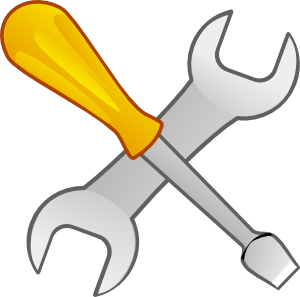I want to expand just a bit more on my metaphor about a Teachers Tool Box.
However, you can still think of it as a vehicle if you would like.
My husband works on cars, auto body to be exact. He would not be able to do his job without his drill and his clip tool. Those tools have to be in his tool box. He uses them on every single car he works on. However, he has other tools that help those tools work.
Sockets, Screwdrivers, Wrenches, Ratchets, and Goggles.
He needs these tools, so that others can have a working vehicle. His tools meet their needs.
Curriculum and Instruction are a teachers main tools. Those tools would not work without with a few more tools. Teachers need the tools of Importance, Focused, Engaging, Demanding, and Scaffolding. Teachers need these to teach, and guess what? Students need them too. These are the tools for responding to a students needs.
When my husband works on cars, there are a few things he has to make sure of before the owner can take them home. He must make sure the car is safe for the owner to drive in again. They must also make sure that the car looks new again, and that the paint and body work look perfect. They must understand, that if the owner finds something they think is wrong with the vehicle, it is his responsibility to look at it again, and clarify or fix.
This is just the same as a teacher showing a student that they matter. A teacher is going to make sure that he/she teaches and a student learns what is genuinely of value, piques a students curiosity, and capture attention by making something satisfying, help a student become more than they thought they could be, and to be a partner.
My husband creates amazing vehicles with his tools. He can fix them to be new again, or he can build one to be beautiful. As teachers, our tools are just as important. Our tools mold a future leader, teacher, doctor, parent, or artist.
Our tools help students discover how ideas and skills are useful in the world.
Our tools provide choices that ensure focus.
Our tools look for fresh ways to present and explore ideas.
Our tools aim high!
Our tools take a NO EXCUSES stance!
Our tools help students realize success in the result of effort.
It is not cheap to fix a vehicle, and many people put trust into the shop where my husband works. My husband and his coworkers invest their time and effort in what they do. We as teachers need to put just as much effort, or more, into what we do.
"Please invest in me," says the student.
We will.
Why?
We see their value, we see their uniqueness, and we will honor them by using our tools to teach them what matters most in their life.
Open up your tool box. Give the students what they need.
Differentiate.


